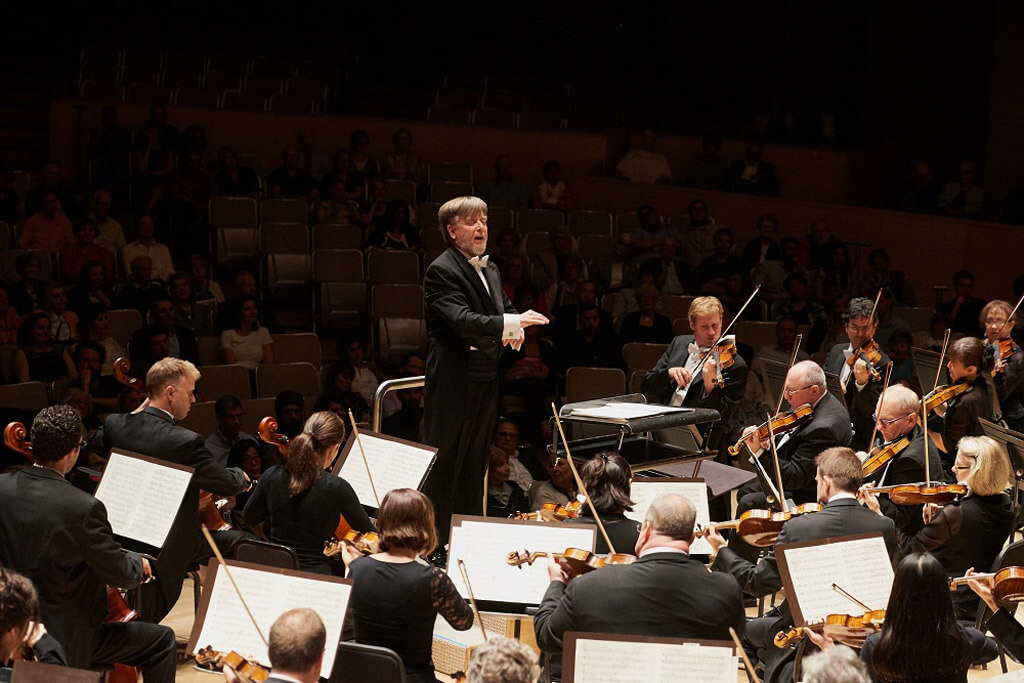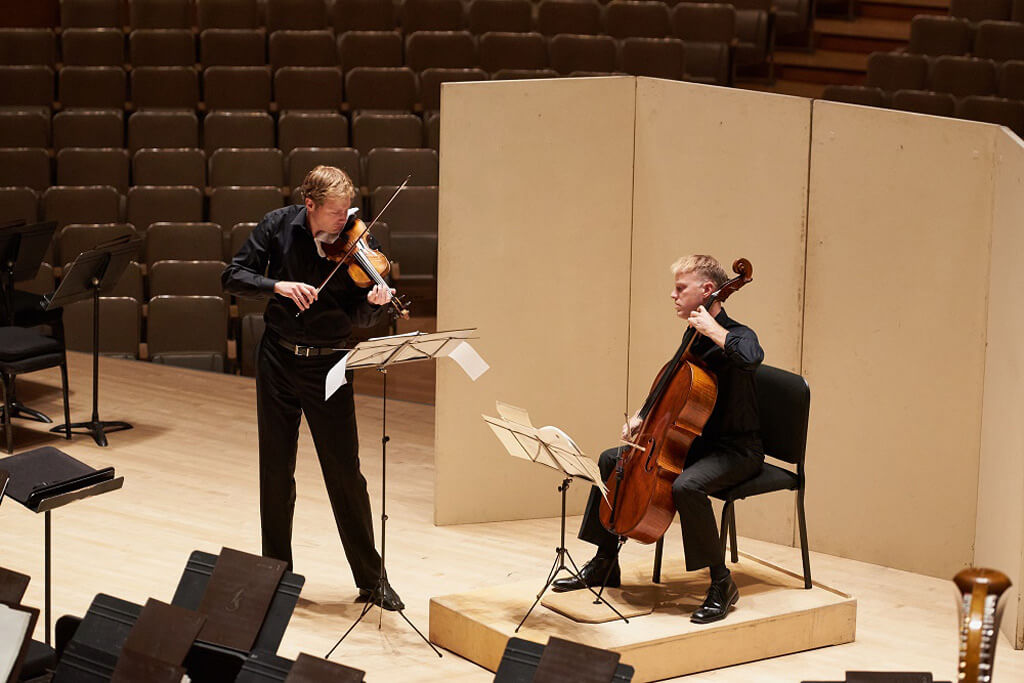
The return of Conductor Laureate Sir Andrew Davis to the Toronto Symphony Orchestra is always a highly anticipated event. And for good reason — Sir Andrew’s tenure with the TSO from 1975 to 1988 was the second longest, after Sir Ernest MacMillan (1931 to 1956). With the recently announced departure of Conductor Peter Oundjian at the end of the 2016-17 season, he will match — but not surpass — Sir Andrew in terms of longevity.
I’ve been an audience member of the TSO as early as the late 1960’s with Seiji Ozawa in those Massey Hall years. Heard all the subsequent conductors from Karel Ančerl, Victor Feldbrill, Sir Andrew, Günther Herbig, Jukka-Pekka Saraste on down to the current Oundjian. I’ll stick my neck out and say Sir Andrew Davis is arguably the most beloved. Others may be equally great when it comes to conducting, but I think the Toronto audiences have a soft spot for Sir Andrew. I was fortunate enough to be in the audience that one time when a few orchestra musicians brought onstage (!) a canoe as a gift to their Maestro! That says it all…
It would be difficult for Davis to top his Verdi Requiem a year ago, a piece that’s very dear to the heart of voice fans like me. And how about that great cast! This time around, if he doesn’t erase the memories of last season’s Verdi Requiem, it is at least as enjoyable. I attended the show on Thursday. Though not sold out, it was a very good crowd. I have to say I’m really impressed with the demographics of the Symphony attendees, quite a lot of young people. With Sound Check, maybe they don’t pay full price, but getting young people to come to the Symphony is not easy. I applaud the TSO for that.

It was quite a musical feast. I went to the “pre-concert concert” with TSO Concertmaster Jonathan Crow and Principal Cello Joseph Johnson playing Zoltan Kodaly’s Duo for Violin and Cello. The two gents played it with gorgeous tone and fully brought out the inherent lyricism of the piece, with its many folk motifs. It certainly put me in the right mood for the evening. The concert proper opened with Ives’ work “Decoration Day” from New England Holidays, given it’s the American Memorial Day weekend. A bit episodic and jarring with the changes of mood, but that’s the whole point — a struggle between solemnity of remembrance and the joy of celebration. Followed by Janáček’s Taras Bulba. I have to confess I am not a big fan — I find it lacks the Czech composer’s uniquely recognisable musical idiom. That said, it’s a striking work, with an interesting if sad story. The third piece was the transcendental Sospiri by Sir Edward Elgar. Sir Andrew was right in his element with Elgar, and the TSO played it with uncommon, other-worldly beauty. If only it were longer than 5 minutes!
I attended the intermission feature where two Swiss Alpenhorn players, Eva Hajda and Rene Waelti, played their unique instruments. As a Wagner and Strauss fan, I am familiar with the Alpenhorn, but this was the first time I saw it up close. The stories they told about other people’s reactions to their playing were priceless! At the risk of sounding like a curmudgeon, I heard a few sour notes in their playing of the three short snippets. Then I realised that the only way to control the pitch is with the lips! Well, they have my admiration. This intermission feature certainly put me in the mood for the second half’s Alpine Symphony.
The Strauss tone poem, Eine Alpensinfonie Op. 64 is quintessentially Richard Strauss. It’s not programmed all that often probably because of the huge resources required — as they say, everything and the kitchen sink when it comes to instruments! The score is thrilling. I am enthralled every time I hear it, with 90 (or more) musicians thundering away on stage, the wind machine going full force during the “storm.” Part of my delight is the strong affinity in the orchestration and the harmonic idiom to his various operas, particularly Rosenkavalier, Die Liebe der Dane, and maybe a bit of Arabella, Daphne and Schweigsame Frau thrown in. This was the last of Strauss’s tone poems when he switched his attention to composing operas, which explains the resemblance. Also very striking are the many strong imageries of nature throughout the piece. Apparently as a young man, Strauss got lost in the mountains and was caught in a rainstorm, which accounts for the extremely vivid imageries in the music — mind you, the huge wind machine helped a lot! Sir Andrew and the TSO gave an absolutely scintillating account of the magnificent score. There’s one more performance this evening. Highly recommended.
#LUDWIGVAN
Want more updates on Toronto-centric classical music news and review before anyone else finds out? Get our exclusive newsletter here and follow us on Facebook for all the latest.



